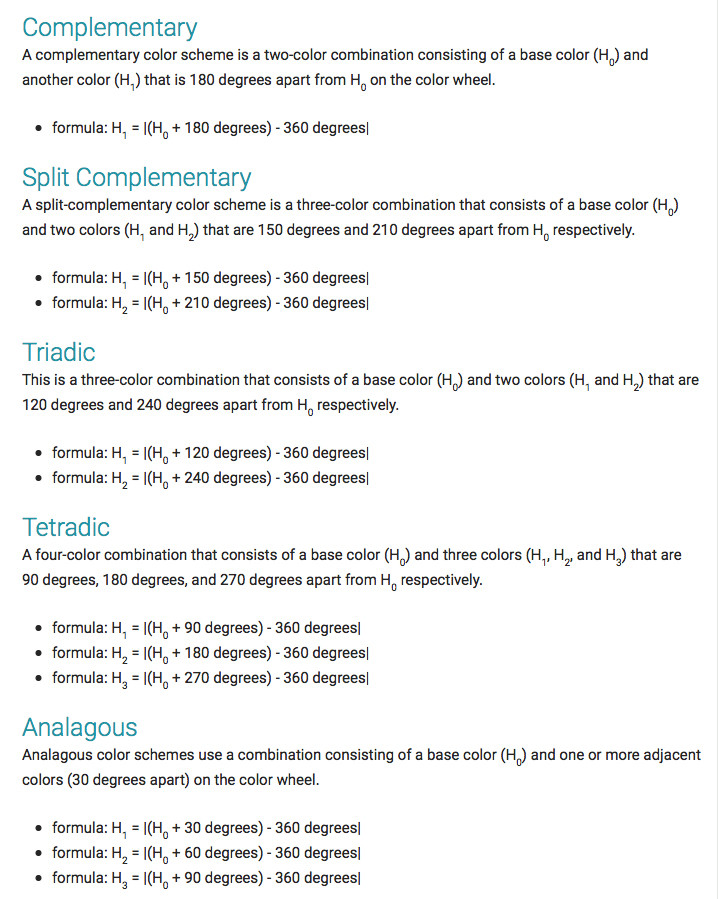I have created swift functions, where I send color value to and want to return triadic and tetrads values. It sort of works, but I am not happy about the color results. Can anyone help me to fine-tune the formula please?
I was following few sources, but the returned colours were too bright or saturated in comparison to several online web based color schemes. I know it's a matter of preference as well and I kinda like the results of the code below, but in some instances of colors the result of one color returned is way too close to the original one, so it's barely visible. It applies only to a few colors...
I was using the formula from here:
my code:
func getTriadColor(color: UIColor) -> (UIColor, UIColor){
var hue : CGFloat = 0
var saturation : CGFloat = 0
var brightness : CGFloat = 0
var alpha : CGFloat = 0
let triadHue = CGFloat(color.getHue(&hue, saturation: &saturation, brightness: &brightness, alpha: &alpha))
let triadColor1 = UIColor(hue: (triadHue + 0.33) - 1.0, saturation: saturation, brightness: brightness, alpha: alpha)
let triadColor2 = UIColor(hue: (triadHue + 0.66) - 1.0, saturation: saturation, brightness: brightness, alpha: alpha)
return (triadColor1, triadColor2)
}
func getTetradColor(color: UIColor) -> (UIColor, UIColor, UIColor){
var hue : CGFloat = 0
var saturation : CGFloat = 0
var brightness : CGFloat = 0
var alpha : CGFloat = 0
let tetradHue = CGFloat(color.getHue(&hue, saturation: &saturation, brightness: &brightness, alpha: &alpha))
let tetradColor1 = UIColor(hue: (tetradHue + 0.25) - 1.0, saturation: saturation, brightness: brightness, alpha: alpha)
let tetradColor2 = UIColor(hue: (tetradHue + 0.5) - 1.0, saturation: saturation, brightness: brightness, alpha: alpha)
let tetradColor3 = UIColor(hue: (tetradHue + 0.75) - 1.0, saturation: saturation, brightness: brightness, alpha: alpha)
return (tetradColor1, tetradColor2, tetradColor3)
}
And I also found nice clean code for finding complementary color, which I am very happy about the results
func getComplementColor(color: UIColor) -> UIColor{
let ciColor = CIColor(color: color)
let compRed: CGFloat = 1.0 - ciColor.red
let compGreen: CGFloat = 1.0 - ciColor.green
let compBlue: CGFloat = 1.0 - ciColor.blue
return UIColor(red: compRed, green: compGreen, blue: compBlue, alpha: 1.0)
}






